Impulse on a body is equal to
Change in momentum
Force × time interval
Force × speed
Both (1) & (2)
To solve the question regarding the impulse on a body, we need to understand the definition and relationship between impulse and momentum. Here’s a step-by-step solution:
Step 1: Understanding Impulse
Impulse is defined as the change in momentum of an object when a force is applied over a period of time. Mathematically, impulse (J) can be expressed as:
J=ΔP
where ΔP is the change in momentum.
Step 2: Relating Impulse to Force and Time
Impulse can also be calculated using the force applied and the time duration for which the force is applied. The formula for impulse in terms of force (F) and time interval (Δt) is:
J=F⋅Δt
Step 3: Understanding Momentum
Momentum (P) of an object is defined as the product of its mass (m) and velocity (v):
P=m⋅v
The change in momentum (ΔP) can be expressed as:
ΔP=m⋅Δv
Step 4: Equating the Two Definitions
From the definitions above, we can equate the two expressions for impulse:
F⋅Δt=ΔP
This shows that impulse is equal to the change in momentum.
Step 5: Conclusion
Thus, we conclude that impulse on a body is equal to both the change in momentum and the product of force and time interval. Therefore, the correct answer to the question is:
- Impulse on a body is equal to:
- Change in momentum
- Force multiplied by time interval
- Both 1 and 2
Final Answer
The impulse on a body is equal to both the change in momentum and the product of force and time interval.
---
Impulse is defined as the change in momentum of an object when a force is applied over a period of time. Mathematically, impulse (J) can be expressed as:
J=ΔP
where ΔP is the change in momentum.
Impulse can also be calculated using the force applied and the time duration for which the force is applied. The formula for impulse in terms of force (F) and time interval (Δt) is:
J=F⋅Δt
Momentum (P) of an object is defined as the product of its mass (m) and velocity (v):
P=m⋅v
The change in momentum (ΔP) can be expressed as:
ΔP=m⋅Δv
From the definitions above, we can equate the two expressions for impulse:
F⋅Δt=ΔP
This shows that impulse is equal to the change in momentum.
Thus, we conclude that impulse on a body is equal to both the change in momentum and the product of force and time interval. Therefore, the correct answer to the question is:
- Impulse on a body is equal to:
- Change in momentum
- Force multiplied by time interval
- Both 1 and 2
The impulse on a body is equal to both the change in momentum and the product of force and time interval.
Topper's Solved these Questions
- LAWS OF MOTIONBOOK - AAKASH INSTITUTECHAPTER - LAWS OF MOTIONEXERCISE - Assignment (SECTION-A)
65 Videos
- LAWS OF MOTIONBOOK - AAKASH INSTITUTECHAPTER - LAWS OF MOTIONEXERCISE - Assignment (SECTION-B)
44 Videos
- LAWS OF MOTIONBOOK - AAKASH INSTITUTECHAPTER - LAWS OF MOTIONEXERCISE - Example
24 Videos
- KINETIC THEORYBOOK - AAKASH INSTITUTECHAPTER - KINETIC THEORYEXERCISE - EXERCISE (ASSIGNMENT) SECTION - D Assertion - Reason Type Questions
10 Videos
- MAGNETISM AND MATTER BOOK - AAKASH INSTITUTECHAPTER - MAGNETISM AND MATTER EXERCISE - ASSIGNMENT (SECTION D)
26 Videos
Similar Questions
Knowledge Check
The following problems illustrate the effect of a time-dependent force of a large average magnitude which acts on a moving object only for a short duration. Such forces are called 'impulsive' forces. According to the impulse-momentum theorem, impulse delivered to a body is equal to the change of linear momentum of the body.
A ball of mass 250g is thrown with a speed of 30m/s. The ball strikes a bat and it is hit straight back along the same line at a speed of 50m/s. Variation of the interaction force, as long as the ball remains in contact with the bat, is as shown in Fig.
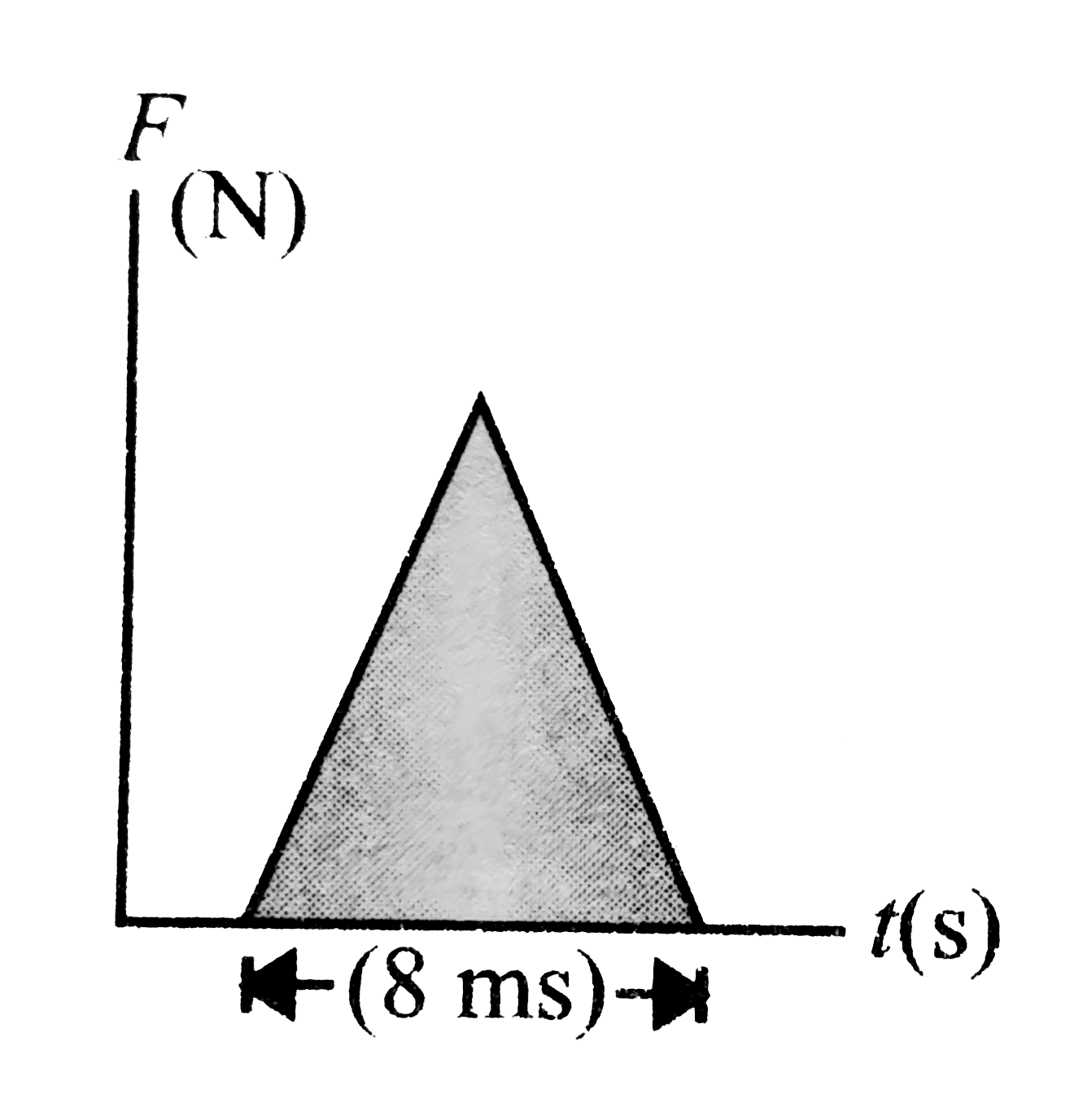
Maximum force exerted by the bat on the ball isA2500NB5000NC7500ND1250NThe following problems illustrate the effect of a time-dependent force of a large average magnitude which acts on a moving object only for a short duration. Such forces are called 'impulsive' forces. According to the impulse-momentum theorem, impulse delivered to a body is equal to the change of linear momentum of the body.
A ball of mass 250g is thrown with a speed of 30m/s. The ball strikes a bat and it is hit straight back along the same line at a speed of 50m/s. Variation of the interaction force, as long as the ball remains in contact with the bat, is as shown in Fig.
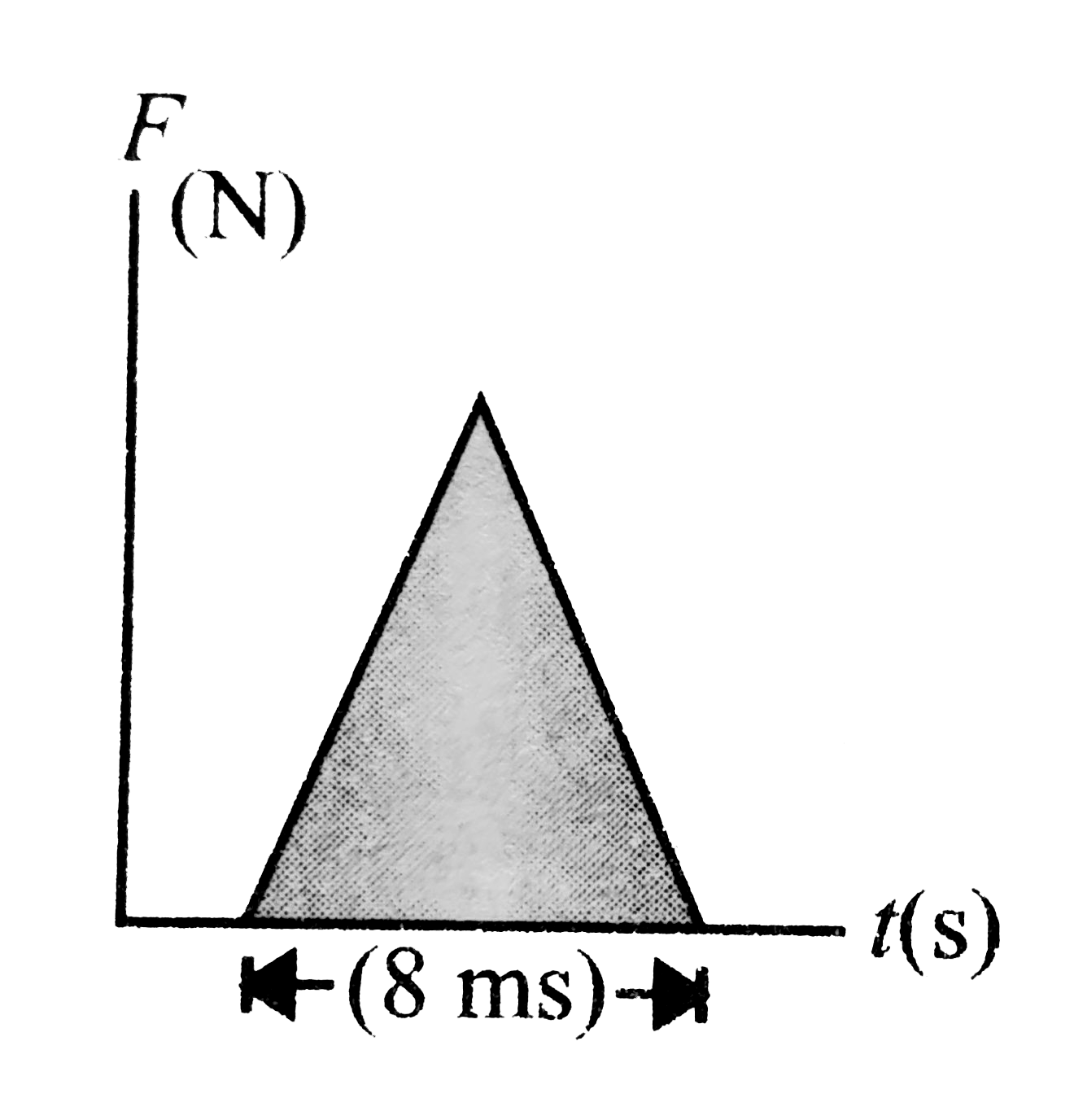 After collision with the hard floor, the ball will bounce to a height A0.6mB2.4mC1.2mD1.8m
After collision with the hard floor, the ball will bounce to a height A0.6mB2.4mC1.2mD1.8mThe following problems illustrate the effect of a time-dependent force of a large average magnitude which acts on a moving object only for a short duration. Such forces are called 'impulsive' forces. According to the impulse-momentum theorem, impulse delivered to a body is equal to the change of linear momentum of the body.
A ball of mass 250g is thrown with a speed of 30m/s. The ball strikes a bat and it is hit straight back along the same line at a speed of 50m/s. Variation of the interaction force, as long as the ball remains in contact with the bat, is as shown in Fig.
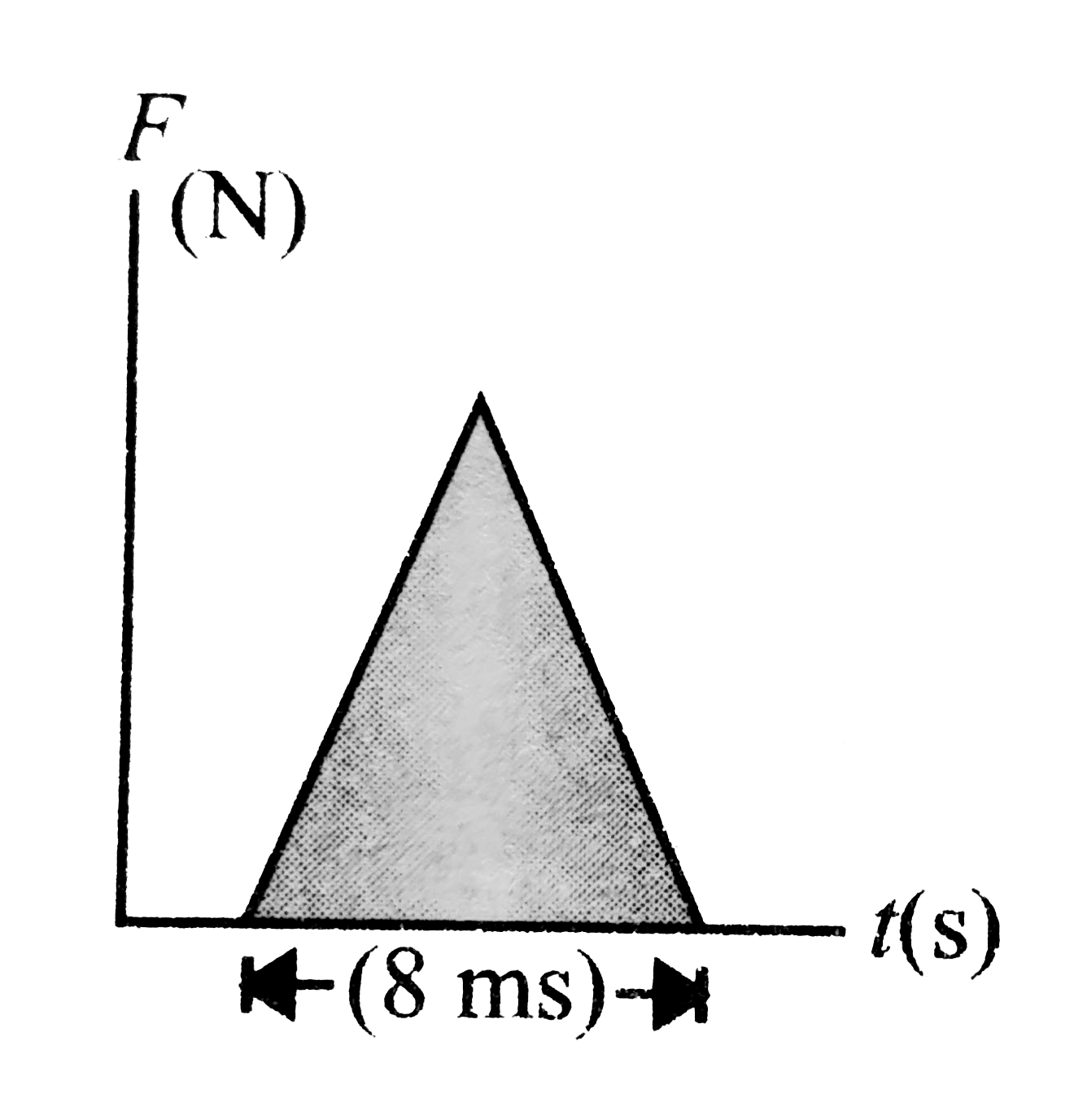
Linear momentum of the ball immediately after colliding with the floor will beA1.5kgm/sB2.5kgm/sC4kgm/sD0.5kgm/s
Impulse is
View SolutionImpulse is
View SolutionThe following problems illustrate the effect of a time-dependent force of a large average magnitude which acts on a moving object only for a short duration. Such forces are called 'impulsive' forces. According to the impulse-momentum theorem, impulse delivered to a body is equal to the change of linear momentum of the body.
A ball of mass 250g is thrown with a speed of 30m/s. The ball strikes a bat and it is hit straight back along the same line at a speed of 50m/s. Variation of the interaction force, as long as the ball remains in contact with the bat, is as shown in Fig.
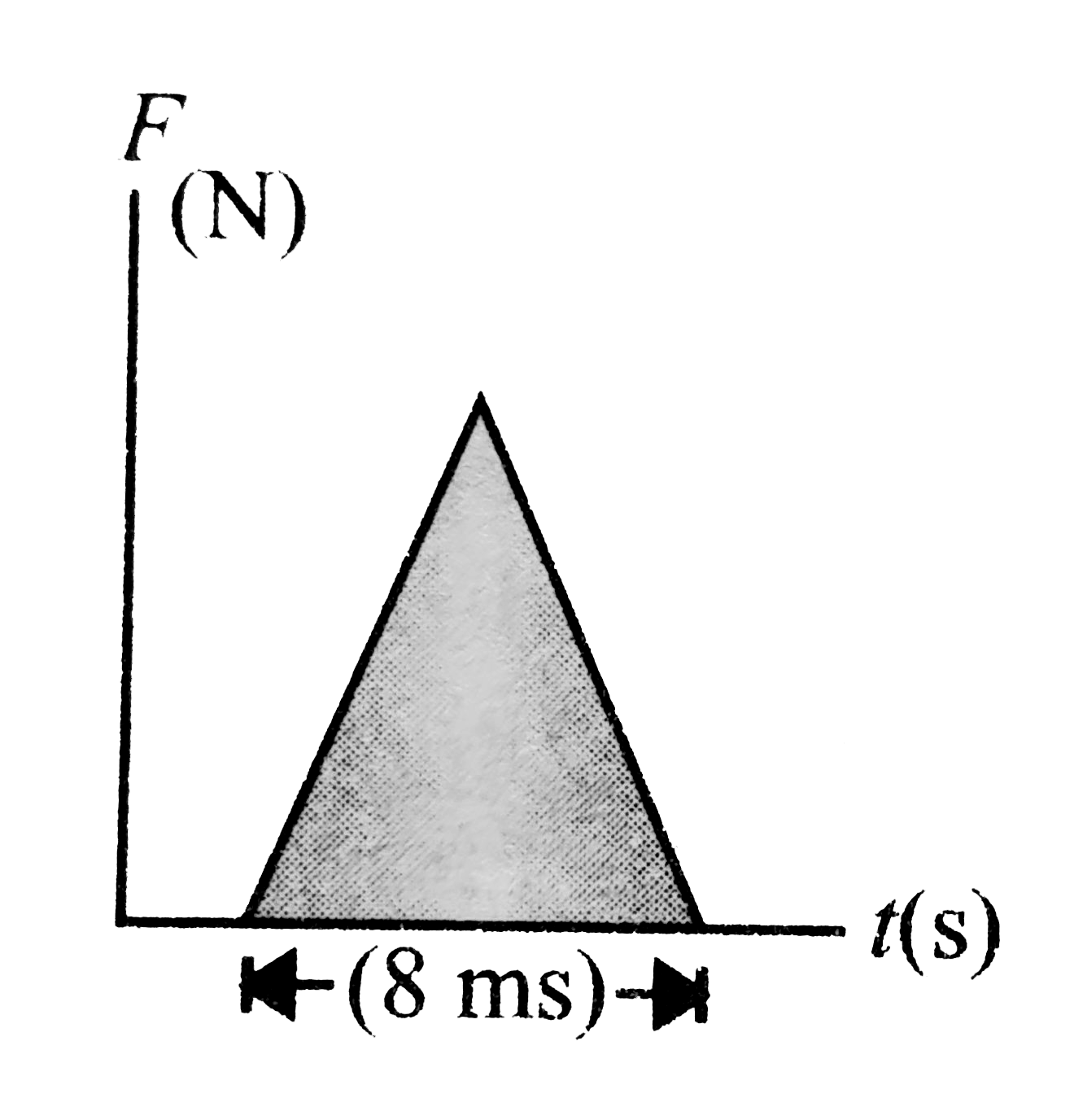
Average force exerted by the bat on the ball is
Let us consider another example. The given ball of mass 250g is dropped from a height 5m on a hard floor. Force exerted by the floor on the ball, as long as these are in contact, varies with time as shown in Fig.
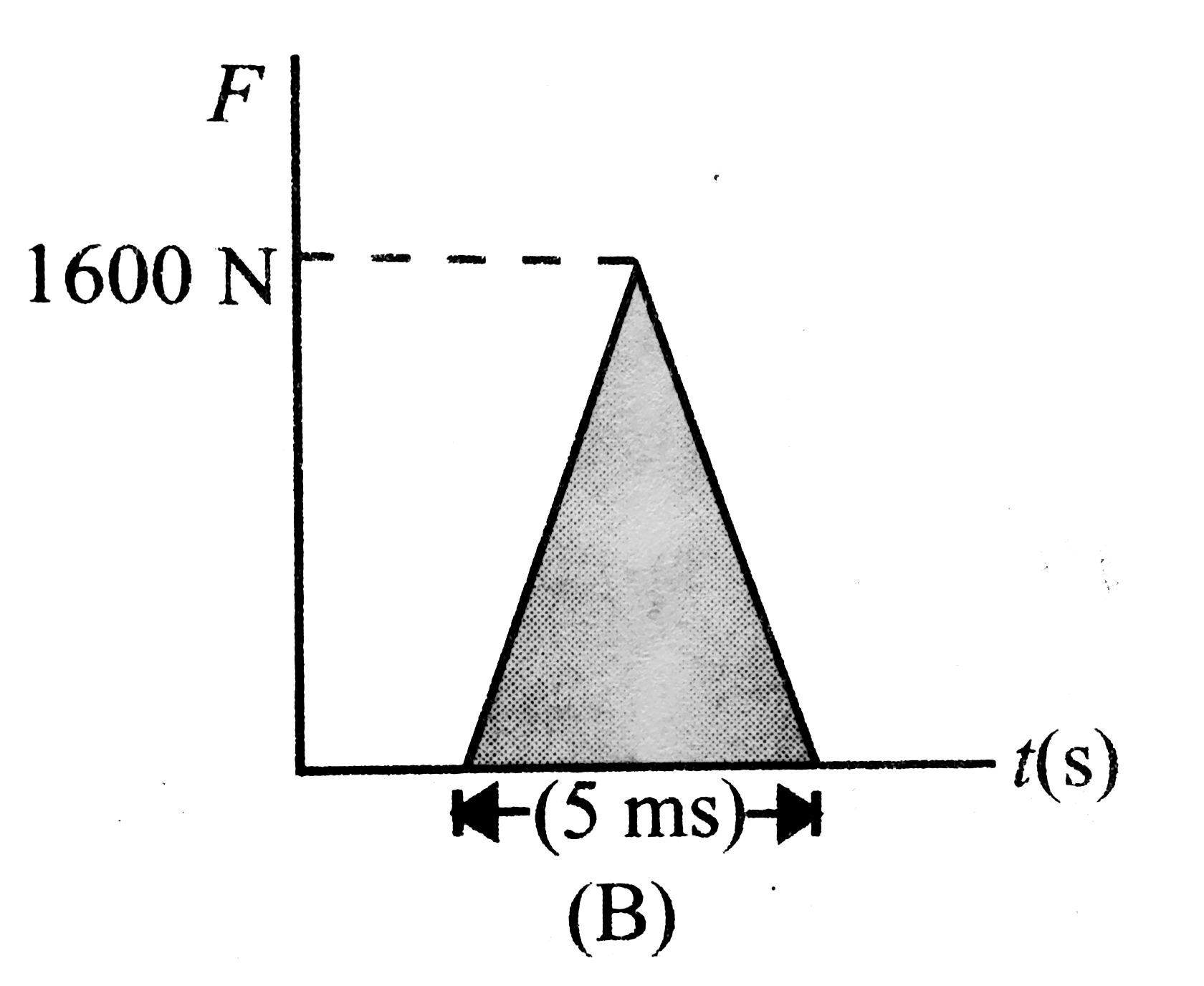
View SolutionThe product of force and the time for which the force acts on a body is equal to the change in ______ of the body.
View SolutionThe volume stress in a body is equal to
View Solution
